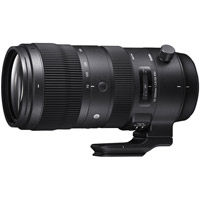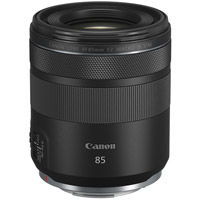
LENSES
We know: there’s a ton of lenses on the market these days and as photographers we want them all! However, with the pace of weddings, it is essential to have workhorse lenses that allow you to move from different lighting and scenes quickly without having to fuss too much with changing out your gear.
We’ve broken it down for you and listed must-have lenses for important parts of the day as well as optional lenses that are a bonus if you can have them in your kit. The key is to have base lenses that are essential for specific types of shots and some specialty lenses for unique shots that don't require quick setting changes, if you have the luxury of owning them.
Portrait Lenses
When shooting the couple, we recommend using a 50mm f/1.4 and 85mm f/1.8 prime lenses. These provide beautiful bokeh while the subjects remain ultra-sharp and the background is slightly out of focus. This look is very popular in wedding photographs as it adds softness to the composition.
For group photos, you’ll probably have a pre-chosen area and therefore can set up your gear to be static. Choose a lens wide enough to include a large group but not so wide that includes too much distracting background. Consider how far you will be able to back up from the group in the space they have chosen. A 50mm f/1.4 will allow you to back up and zoom in with half the depth of field of a 24mm f/2.8.


Outdoors
One rule of thumb is that natural light is usually the best kind of light. If your wedding party wishes to take photos outside, be sure to plan ahead. You can use all of our suggestions in our portrait-lens section but also consider using some reflectors to combat harsh shadows. It’s a good idea to bring a zoom lens if you’re going to be moving a lot, so you can frame a shot in an instant.

Telephoto Lenses
Just a quick note on telephoto lenses: you don’t necessarily want to be in everyone’s face when you’re taking pictures.
Putting a telephoto zoom lens on your secondary camera lets you capture subjects who are camera shy or scenes where you want to stay out of the way.

Candids
Some of the most charming images are the candid shots that capture someone’s personality. Catching people in their natural state instead of a posed composition can be the favourites of the wedding.
When indoors, use a flash if you can. You will need to set your camera to a faster shutter speed. We recommend 1/125 or faster. Of course, this means less light is getting through, so a low f-stop is required. By the same token, you can raise the ISO to make your camera more sensitive to light. Keep in mind that raising the ISO will also create unwanted noise in your images, so only do so until you get the desired results.
Children and pets are constantly moving and make great subjects to practice your settings on. Having a zoom lens will also allow you to capture a wide variety of subjects from different distances from you.
Macro
If you have room in your kit, a macro lens is really great for capturing details of the wedding in quieter moments. Brides often like close-ups of their wedding dress while they are getting ready. Make a list including the rings, table settings, flowers and bouquets, and work with the couple to ensure you capture all the tiny details that they have put so much work into.















